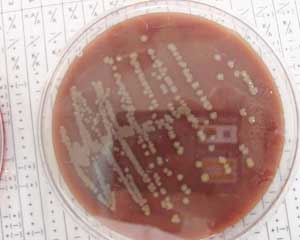Facts about Bacteria
Posted by Admin / in Science Facts

The History of Bacteria Science
- In 1857 Joseph Lister determined that infections are a result of bacteria. He developed sterilization techniques to limit bacteria on medical equipment.
- In 1867 Louis Pasteur invented pasteurization which is a process that uses heat to kill living bacteria in milk and other foods. Pasteurization allows milk to last longer and is safer for people to drink.
- In 1880 Fannie Hess discovered that Agar allows bacteria to grow in a lab setting. Agar looks like jello, but bacteria does not consume agar, like jello.
- In 1928 Alexander Fleming first used penicillin (an antibiotic) to cure bacterial disease.
Interesting Facts about Bacteria
- Bacteria is a single-cell organism with no nucleus.
- There are over 10,000 different kinds of bacteria.
- Scientists classify bacteria as a Monera, which is a very simple single-celled organism.
- There are two groups of moneras including bacteria and blue-green bacteria.
- The difference between bacteria and blue-green bacteria is blue-green bacteria contains chlorophyll like plants. The chlorophyll helps blue-green bacteria make its own food by photosynthesis. This ability helps blue-green bacteria to multiply quickly.
- Scientists also classify bacteria by its shape. There are 3 shape categories including spherical (coccus), rod-shaped bacteria (bacillus) and spiral-shaped bacteria (spirillum).
- Bacteria can live independently from other bacteria.
- Different types of bacteria thrive in different conditions, but all bacteria needs certain things in order to stay alive and reproduce. Essential conditions for bacteria are a source of water, oxygen, nutrients such as sugar, fat, proteins or carbs, temperature (optimum is 68 to 86 degrees F), and a pH typically in the range of 4.5 to 10.
- Bacteria reproduces (copies itself) by splitting in half. Each new cell has a copy of the original genetic material
- Bacteria has the ability to reproduce every 20 minutes under perfect conditions.
- If a bacteria reproduces very 20 minutes for only 10 hours, there could be over 1 billion bacteria!
- Antibiotics are chemicals developed by scientists to stop harmful bacteria growth in people and animals.
- The metal copper, is very effective in killing bacteria when it comes in contact.
- There is good bacteria and bad bacteria.
- Foods like butter, cheese, yogurt and even chocolate contain bacteria. Without this "good bacteria" we would not be able to enjoy these foods.
- There are many types of bacteria that make people sick. We consider this type of bacteria "bad bacteria". Anthrax, cholera, diphtheria, leprosy, bacterial meningitis, pneumonia, tetanus, tuberculosis and whooping cough are all cause by bad bacteria.
